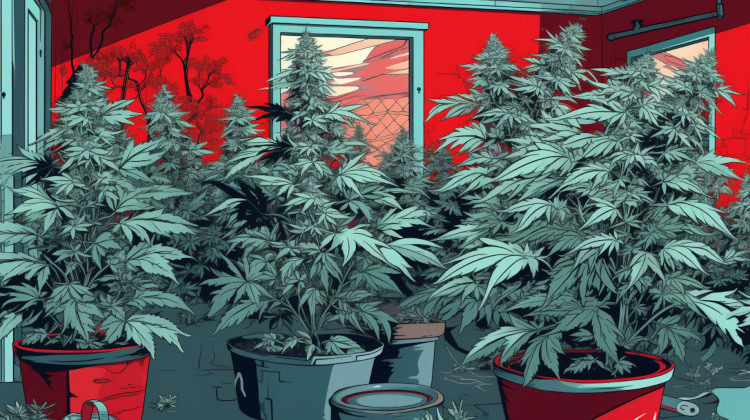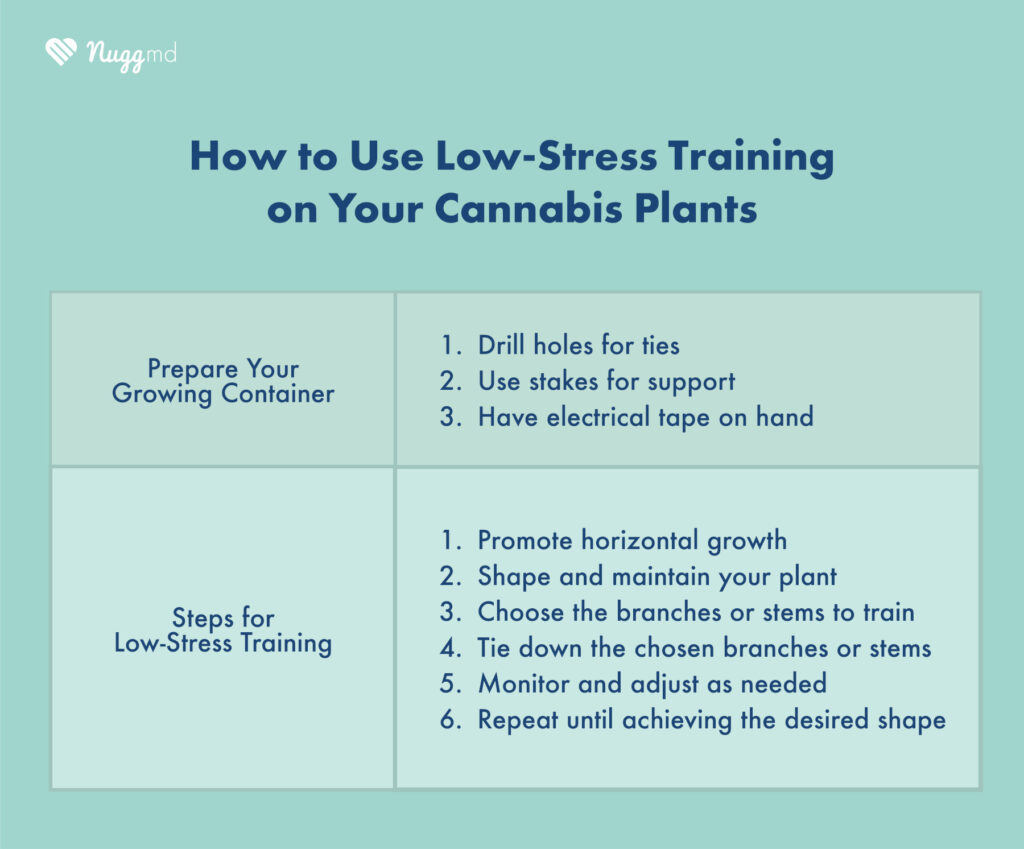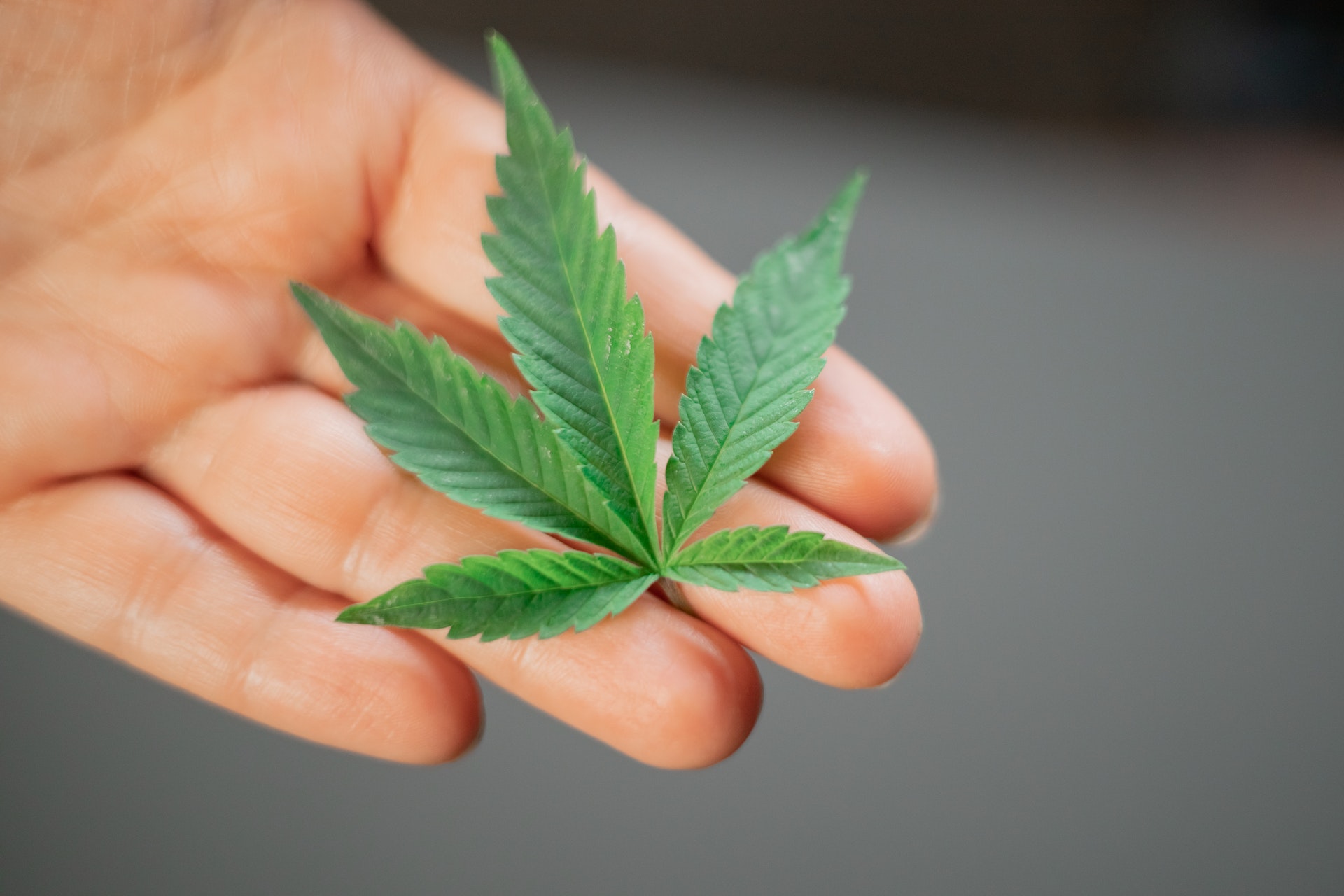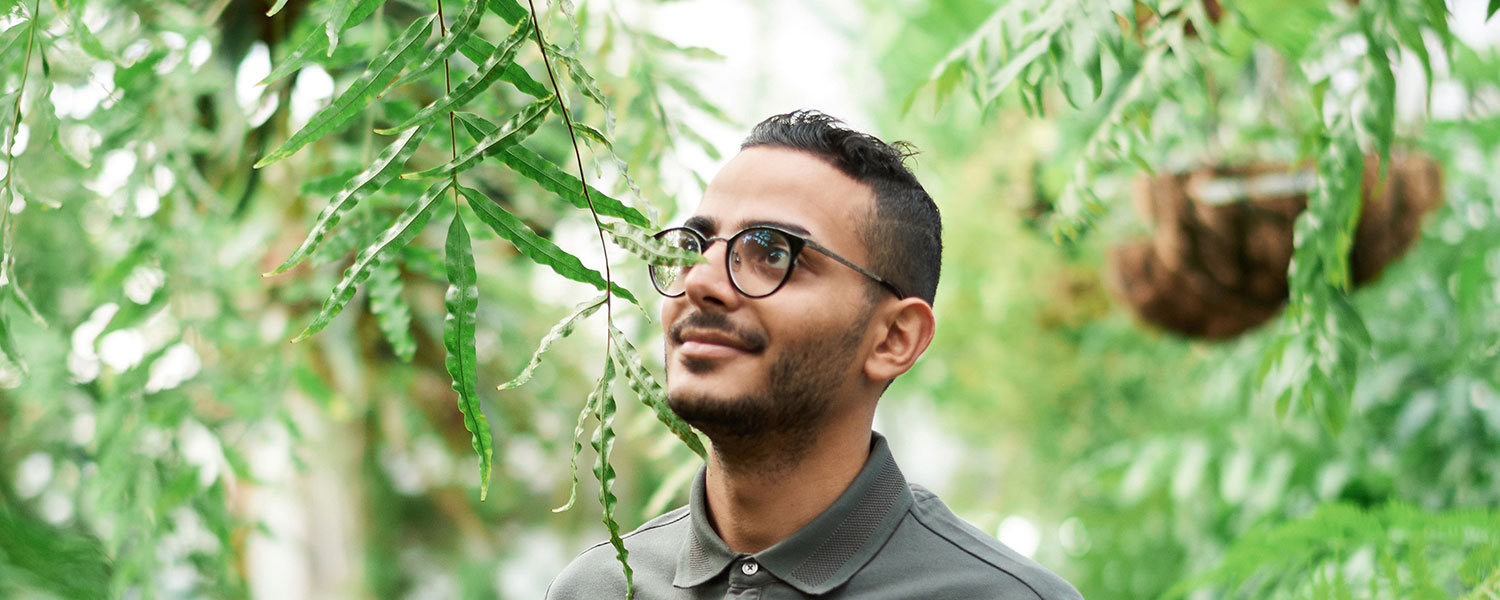Key Takeaways
- LST reshapes plants to expose every bud to light, boosting harvests without cutting or stressing stems.
- LST should start during the vegetative stage with soft ties and binder clips.
- From closet micro-grows to sunny backyards, LST adapts to any setup.
Low stress training (LST) is a cannabis growing technique in which growers gently bend branches instead of cutting them. This method encourages plants to develop broader, more open structures that better capture light without adding stress.
What Is Low Stress Training (LST)?
Cannabis naturally grows like a Christmas tree, tall with one dominant cola and smaller buds below. LST gently reshapes cannabis plants by bending and securing branches, encouraging them to grow outward instead of upward. This method breaks the plant’s natural habit of apical dominance, where the main shoot can prevent other shoots from growing.
Low stress training replaces a single towering cola with a flat, even canopy where every bud gets equal light. By training branches sideways, growers create a bushy, tabletop-like shape. More light reaches hidden bud sites, which can considerably boost yields, all without cutting or stressing the plant.
Unlike high-stress methods like super cropping, LST eliminates guesswork and recovery time. There is no snipping, no waiting, just strategic bends that keep plants healthy and thriving.
Is LST Worth It?: Advantages of Low Stress Training

- Balanced Light Exposure: By training branches sideways, LST ensures light reaches all bud sites, not just the top cola. This is ideal for small spaces like indoor tents, where vertical height limits natural growth.
- Minimal Equipment Required: Basic supplies like soft plant ties or garden wire are all you need to grow weed at home using the low stress training method: no expensive equipment or permanent changes to your setup.
- Gentle on Plants: LST avoids cutting or damaging stems. Thus, plants stay healthy and continue growing without recovery downtime.
- Adaptable to Any Setup: Low stress training works well in any space, from large farms to small indoor gardens.
What You Need for LST
- Rubber-coated plant wire/soft plant ties: Gentle on stems; these prevent damage while securing branches. Avoid thin metal wires or rough string that can cut into growth.
- Thin wooden/bamboo stakes: Support branches and guide their direction during training, easily staked into the soil for stability.
- Hand drill or binder clips: For no-drill tie points, use a drill to create anchor holes in containers or binder clips on the rim.
- Electrical tape: Repair accidental snaps by wrapping damaged stems snugly. Most heal within days.
- LST training clips (optional): Adjustable clips make redirecting branches easier as the plant matures.
- SCROG nets (optional): Pair with LST using plastic nets (not string) to maintain an even canopy. Post-harvest, responsibly dispose of nets to protect wildlife.
When to Start Low Stress Training

The ideal time to start LST is when your cannabis plant has comfortably entered its vegetative stage. At this phase, the plant has developed several nodes, where leaves and branches grow, and its stems are still pliable.
Starting low stress training early in the vegetative stage allows growers to redirect growth before stems thicken and stiffen gently. Early training also disrupts the plant’s natural tendency to prioritize a single dominant cola (apical dominance), encouraging a flatter, more even canopy that maximizes light exposure for all bud sites.
Avoid starting LST once the plant transitions fully into the flowering phase. During flowering, stems become rigid, and branches often bear the weight of dense buds. Bending hardened stems risks snapping them.
How to Use LST

Preparing Your Container
- Drill Holes for Ties: Drill holes around the container rim to secure ties for stems and branches.
- Use Stakes for Support: Add thin wooden or bamboo stakes (11-12 inches) to reinforce branch positioning.
- Have Electrical Tape Ready: Keep the electrical tape on hand to mend accidental snaps. When wrapped promptly, most stems heal fully.
Steps for LST
- Bend the Main Stem: Gently curve the main stem toward the container’s edge, securing it with soft ties through pre-drilled holes. This flattens the canopy, redirecting growth hormones to lower branches and exposing more bud sites to grow lights.
- Shape the Canopy: Keep branches level by bending outward shoots away from the center. Adjust ties weekly as the plant grows, ensuring no branch towers over others. Tip: Lightly trim shaded leaves to boost light penetration.
- Select Branches to Train: Focus on long, flexible branches with healthy leaves. Avoid stiff, woody stems, which are prone to snapping.
- Secure Gently: Tie branches down using soft materials (rubber wire, fabric strips). Leave slack to prevent cutting into stems. For stubborn bends, add lightweight coins or stones as temporary weights.
- Monitor and Adjust: Check tied branches daily for tension or stress. Loosen or reposition ties as needed to avoid constriction.
- Repeat Through Vegetative Growth: Train new growth weekly until the canopy is evenly spaced. Stop once flowering begins.
The information in this article and any included images or charts are for educational purposes only. This information is neither a substitute for, nor does it replace, professional legal advice or medical advice, diagnosis, or treatment. If you have any concerns or questions about laws, regulations, or your health, you should always consult with an attorney, physician or other licensed professional.




